-
Strong ground motion shows need to modify building codes
Population growth and scarcity of undeveloped metropolitan land have changed urban land use patterns and placed an increasing number of people and infrastructure in areas susceptible to topographic effects during earthquakes; building codes should take such trends into account
-
-
Chicago emergency officials preparing for harsh winter
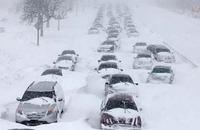
As Chicago braces for an especially brutal winter, the Cook County Department of Homeland Security and Emergency Management is doing its best to prepare residents, emergency responders, and work crews for the worst weather in the nation
-
-
Earthquake science put on trial, quake experts accused of manslaughter
In an unprecedented turn of events, an Italian court has put the heart of earthquake science on trial by accusing seven Italian earthquake experts for failing to warn residents about a 2009 earthquake that killed 309 people
-
-
New Jersey teams with Target for disaster response
During the next major disaster, New Jersey emergency responders will receive assistance from the big box retailer Target; last week the company announced that it had officially teamed up with New Jersey’s Office of Homeland Security and Preparedness to assist state and local officials in the event of a major disaster or terrorist attack
-
-
Animals as earthquake forecasters
Animals begin to behave strangely in the days leading to an earthquake. Researchers find that the chemistry of ground water changes in the run up to an earthquake, and that animals sense these chemical changes and begin to move away. Scientists suggest animal behavior could be incorporated into earthquake forecasting.
-
-
Real disasters hurt annual national disaster drill
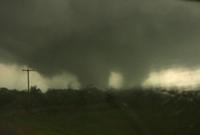
This year the federal government’s annual nationwide disaster drill was hampered by actual disasters; due to an unusually severe series of natural disasters across the country, several states, local agencies, and federal employees were unable to participate in the Federal Emergency Management Agency’s National Level Exercise as they were too responding to real emergencies
-
-
Oklahoma hit by six earthquakes in four days
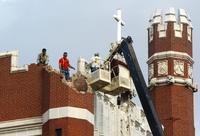
On Sunday residents of Oklahoma were shook by their sixth earthquake in four days; these quakes come in the wake of Oklahoma’s strongest earthquake on record, which struck the state on 5 November; the 5.6 magnitude tremor damaged dozens of homes and caused a freeway to buckle
-
-
Mind-Alliance joins UN Disaster Risk Reduction Private Sector Partnership
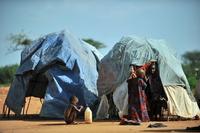
More than 200 million people are affected by disasters each year and in 2010 at least 300,000 people died in major disaster events; annual reported disaster losses now regularly exceed $100 billion; Mind-Alliance, a developer of Information Sharing Management software for homeland security, emergency preparedness, and business continuity professionals, has joined the UN Disaster Risk Reduction Private Sector Partnership
-
-
How disaster survivors survive Thanksgiving
This year’s rash of deadly natural disasters has displaced tens of thousands of people and shattered families across the United States; with the Thanksgiving holiday approaching, many will find it impossible to celebrate in their own home or be forced to face an empty seat once occupied by a loved one
-
-
USDA declares NY and PA counties disaster zones
The U.S. Department of Agriculture (USDA) recently announced that several counties Pennsylvania and New York are now eligible for federal disaster aid
-
-
Building design lessons from the Christchurch earthquake
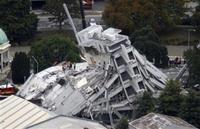
A leading infrastructure expert believes an assessment needs to be made of the level of “very rare” earthquake that needs to be considered in structural design, perhaps one with a 10,000 year return period or higher, rather than the 500 year return period that is commonly adopted for many buildings in Australia
-
-
Plan to protect Houston from the next big hurricane
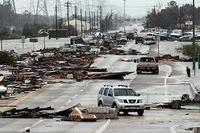
To protect Houston and Galveston from future hurricanes, experts recommends building a floodgate across the Houston Ship Channel, adding new levees to protect densely populated areas on Galveston Island and the developed west side of Galveston Bay; the team also recommends creating a 130-mile-long coastal recreation area to sustainably use wetlands that act as a natural flood barrier
-
-
States over reliant on FEMA aid for small disasters
This year’s unprecedented number of major natural disasters including Hurricane Irene, the record number of tornadoes, and the floods along the entire Mississippi and Missouri rivers strained the Federal Emergency Management’s (FEMA) coffers, but the number of relatively minor disasters that were declared as “major disasters” pushed FEMA resources beyond their limit; some critics say this trend needs to stop
-
-
Costly October disasters worldwide
October saw devastating — and costly — natural disasters in different parts of the world; in Thailand, the flooding has impacted 64 of Thailand’s 77 provinces, affecting more than 9.9 million people with at least 427 reported dead. Preliminary economic losses have been listed at $9.8 billion, with insured losses already estimated at more than $4.6 billion
-
-
Eight months later, Fukushima reactor could still be active
Troubles continue at the beleaguered Fukushima Daichii nuclear power plant in Japan with officials detecting radioactive xenon gas, a byproduct of nuclear fission, from reactor two nearly eight months after the dangerous meltdowns
-
More headlines
The long view
The Surprising Reasons Floods and Other Disasters Are Deadlier at Night
It’s not just that it’s dark and people are asleep. Urban sprawl, confirmation bias, and other factors can play a role.
Why Flash Flood Warnings Will Continue to Go Unheeded
Experts say local education and community support are key to conveying risk.
